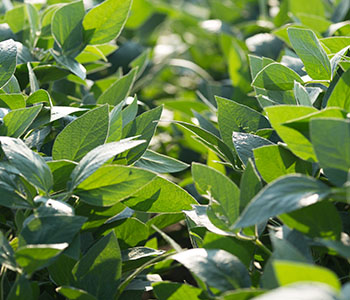CASH IN ON CLEANER WATER
Jan 19, 2022

While carbon markets have been a hot topic of discussion this year, water quality credits are already established and expanding in Wisconsin. Because some of the kinks have already been worked out these programs are more predictable and may serve as a better entry point into the ecosystems services markets. If you’re interested in dipping your toes into the water, here’s some background on these programs…
Water quality credits may be used by Wisconsin Pollutant Discharge Elimination System (WPDES) permit holders to demonstrate compliance with the effluent requirements of their permits. Generally, this involves a point source (e. g. wastewater treatment plant) facing high pollutant reduction costs paying another party to implement less costly pollutant reduction with a similar water quality benefit. This idea came around because point sources have already implemented significant practices to reduce their pollutant loads, but their efforts were not quite good enough. Water quality trading allows point sources to comply with their permit requirement by acquiring pollutant reductions from other sources in the watershed to offset their exceedances. Basically, the wastewater treatment plant pays farms to reduce the phosphorus that comes off cropland so they don’t have to install super expensive treatment systems.
In Wisconsin most crediting is being done where a waterway Total Maximum Daily Load (TMDL) has been implemented. Most TMDL’s have the goal of lowering phosphorus and suspended solid loads in the waterways so that’s what farms get paid to do. This is good news to Country Visions growers as the vast majority of farmland in our trade area is included in a TMDL that has either been approved or is in development including:
-
Upper Fox and Wolf Rivers
-
Lower Fox Basin & Lower Green Bay
-
Rock River
-
Milwaukee River
-
Northeast Lakeshore (everything east of other watersheds to Lake Michigan
You may also hear terms like Water Quality Trading and Adaptive Management. This gets a bit deep in the weeds, but as you may hear both terms, it’s worth noting the differences. These terms may get used interchangeably but they are not the same. Adaptive management is limited to meeting water quality criterion for phosphorus or total suspended solids in the surface water. Water quality trading focuses on offsetting phosphorus (or another pollutant) from a discharge to comply with a permit limit. Both options allow point sources to take credit for phosphorus reductions within the watershed and use many of the same practices to generate reductions. However, depending on which program is being used there are different requirements for the WPDES permit holder.
Now you’re wondering, how do I get started? First you will need a nutrient management plan for your farm. Next, think about practices you can implement that reduce the amount of phosphorus or sediment leaving your fields or barnyard. Barnyard practices may include installing barn gutters, diversions or vegetated treatment areas. Cropland practices include cover cropping, buffer strips, grassy waterways and reduced tillage. Lastly, let your agronomist know of your interest. They can help connect you with multiple partners who may offer cost share for implementation of new practices, in addition to aligning you with the entities offering water quality credits in your watershed.